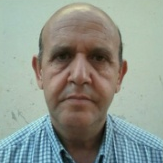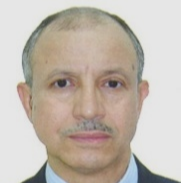International Journal of Intelligent Systems and Applications (IJISA)
IJISA Vol. 6, No. 12, 8 Nov. 2014
Cover page and Table of Contents: PDF (size: 806KB)
Tracking Power Photovoltaic System using Artificial Neural Network Control Strategy
Full Text (PDF, 806KB), PP.17-26
Views: 0 Downloads: 0
Author(s)
Index Terms
Solar Energy, Photovoltaic, MPPT, P&O, Boost Converter, Artificial Neural Network
Abstract
Photovoltaic generation is the technique which uses photovoltaic cell to convert solar energy to electric energy. Nowadays, PV generation is developing increasingly fast as a renewable energy source. However, the disadvantage is that PV generation is intermittent because it depends considerably on weather conditions.
This paper proposes an intelligent control method for the maximum power point tracking (MPPT) of a photovoltaic system under variable temperature and solar irradiation conditions. In this paper, a simulation study of the maximum power point tracking (MPPT) for a photovoltaic system using an artificial neural network is presented. The system simulation is elaborated by combining the models established of solar PV module and a DC/DC Boost converter. Finally performance comparison between artificial neural network controller and Perturb and Observe method has been carried out which has shown the effectiveness of artificial neural networks controller to draw much energy and fast response against change in working conditions.
Cite This Paper
M.T. Makhloufi, M.S. Khireddine, Y. Abdessemed, A. Boutarfa, "Tracking Power Photovoltaic System using Artificial Neural Network Control Strategy", International Journal of Intelligent Systems and Applications(IJISA), vol.6, no.12, pp.17-26, 2014. DOI:10.5815/ijisa.2014.12.03
Reference
[1]C.L.B. Wu and R. Cheung. “Advanced algorithm for MPPT control of photovoltaic systems”. Canadian Solar Buildings Conference, Montreal, 2004.
[2]E.I. Rivera. “Maximum Power Point Tracking using the Optimal Duty Ratio for DC-DC Converters and Load Matching in Photovoltaic Applications”. IEEE, pp. 987-991, 2008.
[3]J.A. Jiang, T.L. Huang, Y.T. Hsiao, and C.H. Chen Tamkangn. “Maximum Power Tracking for Photovoltaic Power Systems”. Journal of Science and Engineering, Vol. 8, No 2, pp. 147-153, 2005.
[4]M.A. Elgendy, B. Zahawi, and D.J. Atkinson. “Assessment of Perturb and Observe MPPT algorithm implementation techniques for PV pumping applications”. IEEE transactions on sustainable energy, pp.21-33, Vol 3, No 1, 2012.
[5]N. Femia, G. Petrone, Giovanni Spagnuolo, and Massimo Vitelli. “ Optimization of Perturb and Observe Maximum Power Point Tracking Method”. Transactions on power electronics, pp.963-973, Vol 20, No 4, 2005.
[6]T. Hiyama, S. Kouzuma, and T. Imakubo. “Evaluation of neural network based real time maximum power tracking controller for PV system”. IEEE Trans. Energy Conversion, vol. 10, pp. 543-548,1995b.
[7]T.N. Tamer, A. Khatib, N. Mohamed, and K. Amin. “An Efficient Maximum Power Point Tracking Controller for Photovoltaic Systems Using New Boost Converter Design and Improved Control Algorithm". WSEAS Transactions on power systems, April 2010, Issue 2, Vol. 5, pp. 53-60.
[8]M. Veerachary, T. Senjyu, and K. Uezato. “Neural Network Based Maximum Power Point Tracking of Coupled Inductor Interleaved Boost Converter Supplied PV System using Fuzzy Controller”. IEEE Transactions on Industrial Electronics, Vol. 50, No. 4, pp. 749-758, August 2003.
[9]G. Bin, D. Jason, J.S. Lai, Z. Zheng, and L. Chung. “High boost ratio hybrid transformer DC-DC converter for photovoltaic module applications”. IEEE Trans. Power Electron. 28, 2048–2058, 2013.
[10]K.C. Tseng, C.C. Huang, and W.Y. Shih. “A high stepup converter with a voltage multiplier module for a photovoltaic system”. IEEE Trans. Power Electron. 2013, 28, 3047–3057.
[11]H.H. Lee, L.M. Phuong, P.Q. Dzung, N.T. Dan Vu, and L.D. Khoa. “The new maximum power point tracking algorithm using ANN-based solar PV systems”. Proceedings of the IEEE Region 10 Conference (TENCON '10), pp. 2179–2184, Fukuoka, Japan, November 2010.
[12]S. Daison Stallon, K. Vinoth Kumar, S. Suresh Kumar, and Justin Baby. “Simulation of High Step-Up DC–DC Converter for Photovoltaic Module Application using MATLAB /SIMULINK”. IJISA International Journal of Intelligent Systems and Applications. pp. 72-82, Vol 7, No 10, 2013.
[13]R. De Keyser, J. Bonilla, and C. Ionescu. “A Comparative Study of Several Control Techniques Applied to a Boost Converter”. IEEE 10th Int Conf on Optimisation of Electrical and Electronic Equipment OPTIM, Brasov Romania, 71-78,ISBN 973-635-704-X, (Eds. Cernat, Nicolaide, Margineanu), 2006.
[14]D. Vasarevicius, R. Martavicius, and Pikutis M. “Application of Artificial Neural Networks for Maximum Power Point Tracking of Photovoltaic Panels”. Elektronika ir Elektrotechnika, ISSN 1392-1215, Vol. 18, N° 10, 2012.
[15]M.A. Younis, T. Khatib, M. Najeeb, and M. Ariffin. “An Improved Maximum Power Point Tracking Controller for PV Systems Using Artificial Neural Network”. PRZEGLĄD ELEKTROTECHNICZNY (Electrical Review), pp.116–121, 2012.
[16]B. Amrouche B, Belhamel M, Guessoum “A. Artificial intelligence based P&O MPPT method for photovoltaic systems [R]”. Revue des Energies Renouvelables (ICRESD-07), Tlemcen (2007), pp.11–16.



